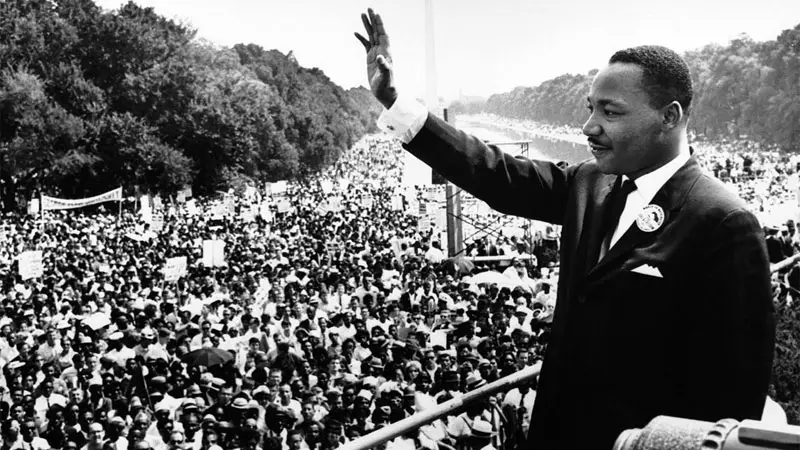When you think of a speech, you’re likely thinking of somebody standing at a podium and curing your insomnia. However, speeches occur everywhere and in many different forms.
There are four major categories of speech: Demonstrative, Entertaining, Informative, and Persuasive. In each category are a number of sub-types, from campaign speeches to eulogies.
The following 13 types of speech cover a wide range of functions, yet aren’t the only kinds available. See how many you encounter on a day to day basis.
Types of Speeches
1. Campaign Speech

Campaign speeches are common form of persuasive speech that revolves around either promoting an ideology or individual or discouraging against them. Ideologies are usually politically-charged and used as platform for major changes in policy.
An example of a campaign speech over an ideological topic is a speech promoting laws to protect an endangered species.
Meanwhile, campaign speeches are more famously used in political campaigns, where the presenter usually uses persuasive speech to promote a specific candidate or sway votes away from an opposing candidate’s followers.
Campaign speeches are the singular form of a debate, making them more effective when pushing a single perspective, but less effective in helping the audience make an informed decision based on all sides of an issue.
See Also: Different Types of Democracy
2. Demonstrative Speech

One of the four major types of speech, the demonstrative is often best described as “sales pitch”. Product reveals (such as an Apple product press conference) can count as either demonstrative or informative.
However, a door-to-door salesman selling you a vacuum cleaner (and pouring dirt on your carpet in the process) is a clear example of demonstrative speech.
Demonstrative speeches are popular in educational settings, the workplace, and YouTube. They can teach you everything from changing a tire to the differences between two similar products.
3. Debate

Debates are a rather unusual type of speech that is slowly becoming a lost art. In a debate, two or more participants gather to discuss their own perspectives on a set of topics, usually preselected. Each participant is usually given the same amount of time to argue their points via persuasive speech.
Traditionally, debates required a degree of etiquette and opposing sides would usually agree with aspects of a point before countering as a means to show they were considering all sides, not just their own.
While one of the most difficult types of persuasive speech to master, someone skilled in the art of the debate and sway opinions and successfully promote a change in the audience’s way of thinking.
As a result, debates remain an important part of the election process, but have largely been abandoned in efforts for societal change where said debates are considered too risky.
4. Entertaining Speech

The odd-one-out of the four major speech types, entertaining speeches are meant to do exactly as they say. Stand-up comedy is one form of entertaining speech.
What sets these speeches apart is the focus on humor and positive audience reactions. Roasts and toasts are two related examples of an entertaining speech.
5. Eulogy

The eulogy is a special form of speech given to remember a person or concept that is no longer present. Most often, the eulogy is given by a minister or funerary officiate and has been prepared, although guests at a funeral have also been known to give eulogies.
In terms of a lost concept, eulogies are much less common and usually consist of personal testimony describing how that concept had been beneficial to the speaker. Eulogies of this type might be given when a company or franchise closes down or a popular public service has been defunded and is no longer available.
6. Impromptu Speech

Perhaps the single most common type of speech, an impromptu speech is one the presenter has not prepared for. Perhaps they were asked to speak at a social event without warning or someone requests information on a topic the presenter wasn’t expecting.
A less common instance of impromptu speeches is when someone has prepared a speech, then decides not to follow it once they’re in front of the audience.
Related: Different Types of Anxiety
7. Informative Speech

This major category of speech is designed to convey information in an objective manner. College lectures are the most common example, but tour guides are also generally considered to be giving an informative speech. The lecturer or speaker is generally believed to have more knowledge of the subject than the audience.
Informative speeches do not require any form of supportive material, such as charts or graphs, although some may include these visual aids. What sets them apart from a demonstrative speech is the fact that informative speeches focus more on explaining the “why” of a subject than the “how”.
Thus, explaining how a toaster oven works can be informative, while actually demonstrating the principles you’re describing makes the speech demonstrative.
8. Inspirational Speech

This is an important mix of persuasive and informative speech where the presenter tells a story to provoke an emotional response in the audience. Inspirational speeches usually convey a positive message, but has also been used to foment negative results.
An example of a positive inspirational speech is a Sunday sermon about becoming more Christlike or Dr. Martin Luther King Jr’s famous “I have a dream” speech.
Meanwhile an infamous example of negative inspirational speeches can be found in Hitler’s speeches to make the German populace fear and district certain demographics, most notably the Jewish population and those who socialize with them.
9. Introductory Speech

Perhaps the quickest form of speech, the introductory speech is used to announce a speaker or guest. These speeches are assigned to a specific person, usually the host or emcee of an event, or an employee, such as a butler or announcer.
While these introductions may include background information about the target, such as awards won or publications they’ve authored, some are as simple as calling out the person’s name.
10. Motivational Speech

Most often a type of persuasive speech, the motivational speech’s goal is precisely what the name implies – to motivate. Coaches give motivational speeches before a big game or at halftime to encourage and motivate the team to play their best.
TED Talks are a perfect example of how motivational speech often blends with informative to motivate a person to improve themselves.
In multimedia, the motivational speech is often given by a supporting character to the protagonist as a means to get them back on track when they lose their convictions.
11. Persuasive Speech

This major category of speech is designed around getting the audience to think or do something specific. Campaign speeches are a good example of a persuasive speech.
Persuasive speeches generally include facts or opinions meant to sway the audience’s perspective on a topics, and almost always end in a call to action, such as “That’s why you should vote for the Loony Party” (yes, this is an actual political party based in the UK) or “Remember, always wear your safety belt”.
12. Pitch

A demonstrative speech with a touch of persuasion, pitches are meant to promote an idea or product. Door-to-door salesmen use pitch speeches to make sales. At board meetings, a member may use a pitch to suggest changes to company policy to increase productivity.
Similarly, a person may use pitch speeches to greenlight a new product design for production. The key to pitch speeches is the fact that they are a proposal, as opposed to a promotion of something that already exists.
13. Toasts and Roasts

These two speech types are two sides of the same coin. In both cases, the speech is made at a social event and targets the central guest or host. Toasts give a positive message and usually end in wishes of good health, prosperity, or other positive future outcomes for the target.
Meanwhile, roasts are meant to provide good-natured insults aimed at the target and usually revolve around the target’s shortcomings or include adaptations of common schoolyard insults such as “He was so ugly as a baby, the doctor slapped his mother”. Roasts are almost always consensual in nature.

